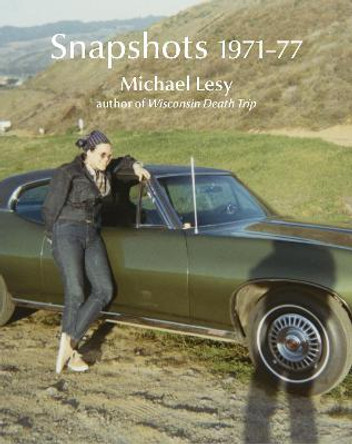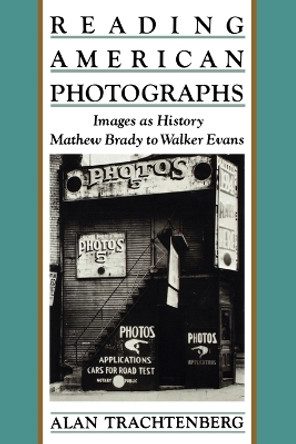Description
In 1973, Michael Lesy was a young scholar whose first book had just been published. In the soon-legendary Wisconsin Death Trip he combined 1890s photographs and newspaper clippings to evoke a devastatingly tragic epoch, the real-world antithesis of the fanciful "Gay Nineties." It startled readers then and remains a touchstone of modern photographic interpretation.
That year Lesy met and became close friends with the great photographer Walker Evans, who in the 1930s had collaborated with writer James Agee to create another towering landmark in the American photo-essay, Let Us Now Praise Famous Men. Old, frail, with just two years left to live, Evans was still urgently and obsessively photographing. "Outside the rooms he inhabited," Lesy writes, "the world was scattered with objects on their way to oblivion. He photographed them in their passage." Brief as their friendship was, it was intense and rewarding. Each admired the other; each saw himself reflected in the other: aesthetic visionaries who shared a radical belief that photographs were not flat and static documents-that "the plain truth of the images . . . wasn't as plain as it seemed," Lesy explains. "Meanings, beliefs, and emotions lay crisscrossed under the surface of the most plainspoken photographs." Throughout his career in the classroom and in more than a dozen books, Lesy has continually inspired us to open our eyes, our minds, and our hearts to those many layers of meaning and feeling in photos, from seemingly ordinary snapshots to majestic landscapes.
In this unconventional, lyrical biography, Lesy traces Evans's intimate, idiosyncratic relationships with men and women-the circle of friends who made Walker Evans who he was. "Wonder and scrutiny produced the portraits Walker made in his prime," Lesy writes. Evans's photographs of Agee, Berenice Abbott, Lady Caroline Blackwood, and Ben Shahn, among others, accompany Lesy's telling of Evans's life stories.
"Wonder and scrutiny, suffused with desire and dread, produced the portraits he made in his last years," Lesy notes. In the 1970s, Evans became enthralled with the Polaroid SX-70 and its colorful instant images, and he used it to take his last photographs-portraits of people, in extreme close up, and portraits of objects.
"Good clothes and good conversation, wit and erudition, originality and inventiveness, the charms of smart and pretty women-Walker took pleasure in being alive," Lesy writes. "He photographed objects as if they were people and people as if they were souls. All the while, he never forgot Blind Joe Death. The annihilations of the First War, the extinctions of the epidemic that followed it, the pyres and the pits-these he never forgot. The still silence of his images was, to the very last, transcendental, and always he remembered the skull beneath the skin."
About the Author
Michael Lesy is one of America's leading photographic scholars. His books include Wisconsin Death Trip, Snapshots 1971-77, Murder City, Angel's World, Long Time Coming: A Photographic Portrait of America, 1935-1943, and Looking Backward: A Photographic Portrait of the World at the Beginning of the Twentieth Century. In 2007, the United States Artists Foundation named Professor Lesy its first Simon Fellow, and in 2013 he was awarded a Guggenheim Fellowship for Photography Studies. He lives in Amherst, Massachusetts, and is professor emeritus of literary journalism at Hampshire College.
Reviews
Walker Evans is one of the most vaunted American photographers in history. His name is evoked with reverence; his influence continues to shine through in work by contemporary photographers to this day, its imprimatur now firmly established in the canon of American photography.
While Evans' most well-known output is the kind of "straight" work that [Lincoln] Kirstein described them as, these color photos in Lesy's book seem to be far more intimate and less studied, more lyrical and personal. There is a real warmth and intimacy to them that the instantaneous nature of the Polaroid helped achieve. But maybe they are also that way because they are the traces of a man on his way out of life embracing his last experiences and encounters. At any rate, I find them to be a penetrating look into the art of an American luminary. Lesy's book extends that feeling in its second half by compiling portraits and stories of key figures in Evans's life.
Of particular interest to me are the color portraits that Evans made with the SX-70. These are presented along with other Polaroids that deal with some of the familiar themes his earlier work dealt with. But the portraits seem more vulnerable and intimate. Evans made these portraits at parties where he mingled with friends and students.
If you're not careful, you'll find yourself crawling down a rabbit hole reading all of these stories. That's exactly what happened to me while paging through the book. I got so enthralled with the stories, it was an hour and a half before I lifted my head from the pages the first time I encountered the book!
-- Kenneth Dickerman * Washington Post *For most viewers, Walker Evans will always be a man of the 1930s, an era-defining genius who lost his way as life changed. Yet his late work-and particularly the images he made using a Polaroid SX-70 in 1973-74, just before his death in 1975-has had admirers, passionate but rare. . . . Flat, deeply shadowed, eerie, they resonate with a desperate immediacy that seems more in keeping with contemporary sensibilities than does the classical austerity of the more renowned work of four decades earlier. -- Barry Schwabsky * Bookforum *
Walker Evans (1903-75) was one of the greatest of 20th-century American photographers. His images of people and scenes of rural and urban life during the Great Depression have become our collective visual memory of the era. Historian/biographer Lesy's . . . highly readable biography is enriched by the author's personal connection with Evans. Lesy met the photographer (the encounter is vividly sketched here) in Evans's last years, an eminence grise still actively making pictures, teaching, and creatively experimenting. Life stories constitute the major part of this biography, filled with intimate and frank details about Evans and his friends, colleagues, and lovers. Includes over 50 of Evans's late-career, color, SX-70 Polaroid instant-film images. VERDICT: An excellent and accessible brief introduction that is a personal glimpse into the life of Evans and his circle. --Library Journal
-- Library Journal * Library Journal *Toward the end of his life, Walker Evans began using a Polaroid camera. The images he photographed were distinct from the stark black-and-white shots he built his name on in the 30s and 40s.... By contrast, the Polaroid shots had an eerie warmth to them. The instant camera had its shortcomings - bleached colors and imprecision - but he found an elegance in street arrows and faces and junkyard detritus. The photos served as a curious and elegiac capstone to a career that ended with his death in 1975. . . . Lesy and Evans met in the early 70s when both were teaching at Yale. By then Evans no longer had the same presence in American photography he once did, but in a way that was liberating, and the flexibility the camera gave him was a useful tool for his seeking spirit. . . . If Lesy has an overarching interest in writing this book beyond the Polaroids . . . , it's in showing the lifelong intersection of Evans' work with the people who in various ways supported it. The bulk of the book's prose are vignettes of friends, patrons, and colleagues, accompanied by Evans' portraits of them. History now frames Evans as an early- to mid-century phenomenon, a precursor to Robert Frank and Diane Arbus. Lesy wants to emphasize that he was a lifelong poet of loneliness and desolation. Every face he photographed, be it in 1929 or 1973, was caught seeking something; every inanimate object a symbol of a need unmet. . . . The Polaroid may have been dismissed for its imprecision and disposability. But it was the perfect format for an artist who recognized ephemerality, whose images were infused with the idea that all things end. -- Mark Athitakis * On the Seawall *
Book Information
ISBN 9780922233526
Author Michael Lesy
Format Hardback
Page Count 176
Imprint Blast Books,U.S.
Publisher Blast Books,U.S.







